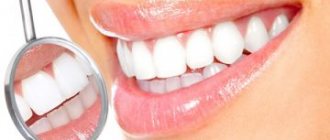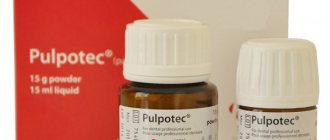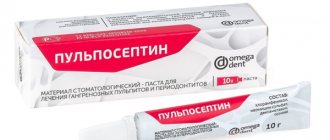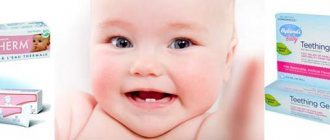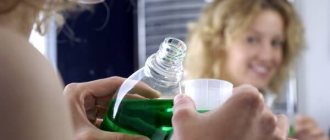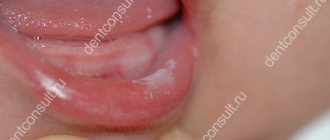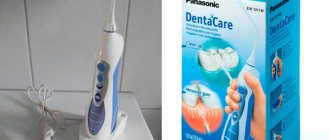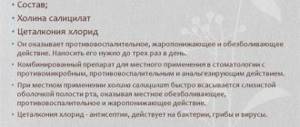Description of the drug
I really don’t want to “poison” the body with synthetic drugs, especially if there is only a moderate inflammatory process in the mouth or throat. This is especially true for children, when the growing body requires only natural and beneficial substances, and any chemicals only suppress the immune defense.
Among herbal combination products that do not contain chemicals, I would like to highlight the drug “Rotokan” for gargling and mouthwash; it can be used by both adults and children. This drug has stood the test of time, is produced in Russia, and is made from herbs growing in our native lands, and this is quite important.
Some herbalists are of the opinion that the patient is helped by those gifts of nature that grow in the patient’s area of residence. It's hard to argue with this, because... There are many cases where exotic foods and plants caused severe allergies.
To learn more about rotokan and better navigate when using it, we will compile brief instructions for use for gargling and mouthwash, and also get acquainted with reviews about this product.
When purchasing liquid extract of rotokan in a pharmacy, you will not find information on the packaging that the product is used for rinsing the mouth or throat; there is a clear indication - “for oral administration and topical use.” It follows from this: the extract is suitable not only for rinsing, but also for treating internal organs. Oral use of rotokan will also solve gastroenterological problems accompanied by a violation of the integrity of the mucous membrane.
Diseases of teeth and gums
Treatment strategy for gingivitis
How is gum inflammation treated? The pathogenesis is based on the inflammatory process, which means that it is necessary to include medications with anti-inflammatory activity in treatment regimens. The etiology, or cause of the disease, may be associated with the activation of pathogenic microorganisms, and therefore it is advisable to use antimicrobial agents.
Of all the symptoms, pain is the most uncomfortable; To reduce discomfort, pastes or gels with adhesive and analgesic properties should be used. They not only relieve pain, but also protect the mucous membrane from the negative effects of food and drinks and accelerate regeneration.
Solutions, infusions and decoctions for rinsing
One of the main methods of treating gingivitis is rinsing. If you have gum inflammation, you can rinse your mouth with pharmaceutical or folk remedies - decoctions and infusions of medicinal herbs prepared at home.
Pharmacy medications for rinsing
Chlorophyllipt.
Plant-based pharmaceutical rinse. Chlorophyllipt has a pronounced antibacterial effect and is effective against a wide range of microorganisms. It is produced in the form of a concentrated green alcohol solution with a pine smell, which requires dilution. To cure inflammation of the gums near the tooth, add one or two tablespoons (or one or two caps) of chlorophyllipt to 100 ml of warm water. You should rinse your mouth with chlorophyllipt several times a day.
Chlorhexidine bigluconate.
A time-tested disinfectant that has a detrimental effect on many pathogenic microorganisms. Widely used in dental practice. Available in the form of a solution with a concentration of 0.05%, 0.1% and 0.2%. You can rinse your mouth with a 0.05% solution of chlorhexidine bigluconate without prior dilution. It is advisable to dilute more concentrated solutions with warm water in a ratio of 1:2 or 1:4.
Miramistin.
An antiseptic that is actively used to prevent and treat infections of the skin and mucous membranes. When treating gum inflammation, a 0.05% solution of miramistin is used, which does not require prior dilution. You should rinse your mouth or irrigate the inflamed area with an antimicrobial agent several times a day, at intervals of 2-3 hours.
Furacilin.
Furacilin solution is one of the most effective and popular antibacterial agents. It is still actively used in surgical practice; furatsilin is also used in the treatment of dental pathologies. Available in tablets. Before rinsing, you need to dilute 1 tablet of furatsilin in 100 ml of water.
Hydrogen peroxide
- a universal remedy with powerful antimicrobial potential, which is used both in surgery and at home. In dentistry, hydrogen peroxide is used for many diseases of the oral cavity. For gingivitis, it is recommended to rinse your mouth with a 3% peroxide solution. You can also apply cotton swabs soaked in an antibacterial agent to the inflamed mucosa.
Rotokan.
Those who prefer traditional herbal-based products can rinse their mouth with Rotokan solution. The natural preparation contains a combination of yarrow, calendula and chamomile extracts. Before use, it requires dilution: add about one teaspoon of Rotokan solution to a glass of warm water.
Traditional medicine
Substances of plant origin are included in many pharmaceutical rinses, but healing solutions can be prepared independently, at home.
To do this, you just need to purchase the necessary ingredients and mix them in the correct proportions. You should choose herbs that promote the reverse development of inflammation, reduce pain, suppress the activity of microbes and accelerate regenerative processes. For inflammation of the gums, the following folk remedies have a good effect:
- Calendula;
- Oak bark;
- Chamomile;
- Oregano;
- Yarrow;
- St. John's wort;
- Sage;
- And others.
To brew a calendula infusion, just take one tablespoon of the plant’s flowers and pour 200 ml of boiling water over it.
Let it brew for 1-2 hours, then use the infusion for rinsing without additional dilution. To prepare chamomile infusion you will need 2 tbsp. l. plant flowers. Next, everything is standard - pour 200 ml of boiling water, let it brew and use it for rinsing or mouth baths. Preparing a healing remedy from yarrow is a little more difficult. Boil two tablespoons of plant flowers for 15 minutes. Then the broth is filtered and allowed to cool to a temperature of 38-40 degrees. You need to rinse your mouth with yarrow decoction several times a day. A decoction of oak bark is prepared in the same way, but the heat treatment time in this situation increases to 30 minutes. It’s easier to make a healing infusion of sage at home - just pour 200 ml of boiling water over a tablespoon of inflorescences. The solution is infused for about an hour, after which it can be used for mouth baths or rinsing. You can also use other medicinal herbs for rinsing: plantain, mint, agave, linden, St. John's wort or oregano. All mouthwashes, both pharmaceutical and homemade from medicinal herbs, must be used regularly. Rinse your mouth after each meal, especially carefully on the affected side. This will help clear the mucous membrane of food particles, which can be irritating, increase the inflammatory process and inhibit the regeneration of the epithelium. After rinsing, you can additionally treat the inflamed area with ointment or gel; Pharmacy pastes for topical use are discussed in the next section of the publication.
Local remedies: pastes, ointments and gels
Rinsing allows you to quickly and efficiently clean the oral cavity, but the effect of medicinal substances from solutions is limited in time.
In order for the healing process to proceed continuously, after rinsing it is necessary to treat the inflamed mucous membrane with a special adhesive film-forming agent - ointment, paste or gel. Dental pastes create a thin but durable film on the surface of the mucosa, which serves as a barrier layer. This barrier protects the damaged area from the unwanted effects of external factors - chemical components of food and drinks, tobacco smoke, food particles. Aggressive environmental factors irritate the mucous membrane and can provoke repeated damage to the painful area, which not only increases pain, but also inhibits the processes of regeneration and self-healing. With gingivitis, it is extremely important to prevent the negative impact of external factors on epithelial tissue. For this purpose, it is necessary to use dental ointments, balms or gels. In addition to the protective function, many pastes have anti-inflammatory, antibacterial, analgesic and wound-healing effects. They reduce swelling and redness, relieve discomfort (reduce itching, pain and burning), and accelerate regenerative processes.
Metrogil Denta
. Dental gel with a powerful antibacterial effect. Metrogyl Denta contains two substances with antimicrobial activity - metronidazole and chlorhexidine. Apply to the mucous membrane 2 times a day with a cotton swab or finger, after thoroughly cleansing the oral cavity. After applying the product, it is advisable not to drink or eat for at least half an hour.
Solcoseryl Denta.
Dental paste with a wound-healing effect, which is actively used to treat gum and periodontal diseases. Apply with a finger or a cotton swab to previously cleaned and dried mucous membranes. There is no need to rub in Solcoseryl Dent; just spread it over the surface in an even layer. You need to treat the affected area 2 or 3 times a day. Solcoseryl Denta paste does not have antimicrobial activity.
Holisal Dental.
Dental gel with anti-inflammatory and analgesic properties. Contains natural ingredients that reduce pain and relieve inflammation. Does not have antimicrobial activity. Holisal Dental should be applied 2-3 times a day. You can use this product both before and after meals to create a protective layer on the damaged area and reduce discomfort during meals.
Asepta.
Dental gel developed specifically for the treatment of inflammatory diseases of the gums and periodontium. Contains propolis extract, has anti-inflammatory and antimicrobial effects. Reduces discomfort (itching, burning, pain). Accelerates epithelial regeneration. Asepta is applied to the cleansed mucous membrane of the inflamed area 2-3 times a day. It is advisable not to drink or eat for half an hour after applying Asepta gel.
Medicinal toothpastes
Even if you regularly brush your teeth with expensive, high-quality toothpaste, gingivitis requires a special approach. Whitening compounds are not suitable - it is necessary to brush your teeth with medicinal pastes, which are developed taking into account the requirements for the treatment of this disease. Lakalut Active
has a good effect .
"President Active"
- another toothpaste that helps relieve inflammatory processes and suppresses the activity of pathogenic microorganisms. It is recommended to brush your teeth with this paste for 2-3 weeks, until the integrity of the epithelium is completely restored. As an alternative to the pastes mentioned above, you can use Parodontax, which contains plant extracts with anti-inflammatory effects.
Gingivitis and antibiotics
Do I need to take antibiotics for gum disease?
On the one hand, the cause of gingivitis may be the activation of pathogenic or opportunistic flora, and therefore the decision in favor of antibiotics seems justified. In fact, topical antiseptics, which were discussed in previous sections of the publication, are sufficient to suppress pathogens. Systemic antibiotics are rarely used for gingivitis, and only as prescribed by a dentist. You cannot take antibacterial drugs on your own. This can lead to disruption of the normal biocenosis of the oral cavity and the entire digestive system. Dysbacteriosis negatively affects regenerative processes and promotes the activation of pathogenic organisms, in particular fungi of the genus Candida, which can lead to the development of candidal stomatitis. Make an appointment
Composition, release form, price
The alcohol solution of rotokan contains three main extracts: chamomile (2 parts), calendula (1 part) and yarrow (1 part). This mixture of medicinal extracts has a brown tint and a specific aroma.
Thanks to the successful combination of medicinal herbs, we have a regenerating, antiseptic, anti-inflammatory and hemostatic effect.
Rotokan is produced in bottles of 25, 50 and 100 ml, the price of which is 20, 30 and 70 rubles, respectively.
Contraindications and side effects
Rotokan has few limitations, but it’s still worth listing them:
- immunity to any of the components of the extract;
- alcoholism;
- severe renal and liver failure;
- pyelo- and glomerulonephritis;
- trauma to the skull with damage to the meninges;
- brain pathologies;
- pregnancy, lactation and childhood (for internal use).
Apart from the first point, all restrictions are more related to the presence of ethyl alcohol in the extract (at least 33%), so for local rinsing of the mouth and throat this is not a problem, because There is no need to swallow the product during the procedure.
You just need to carefully monitor children so that during the procedure the child does not swallow the rotokan. Some instructions give warnings for children, some up to 12 years of age, others up to 18 years of age. But, again, if the alcohol does not enter the stomach, diluted doses of rotokan cannot harm.
The most dangerous contraindication is considered to be only the allergy to herbs and alcohol.
How to breed it?
Only an alcohol solution needs to be diluted. To do this, use boiled water at room temperature. About the proportions - below.
Directions for use and dosage
Chlorophyllipt can be purchased at a pharmacy without a doctor's prescription and used at the first sign of stomatitis.
Attention! If after 3-4 days of using Chlorophyllipt there is no improvement, you should visit a doctor. Let's consider the features of using each of the release forms
Let's consider the features of using each of the release forms.
Oil solution
It is a dark green oily liquid. Has no age restrictions.
It is applied pointwise to ulcerative elements and wounds of the mucous membrane, avoiding undamaged areas.
The procedure is carried out 3-4 times a day after meals, after rinsing the mouth with warm boiled water. For application use gauze or a cotton swab.
Spray
For inflammatory processes occurring in the upper respiratory tract, as well as for the treatment of catarrhal stomatitis, the throat is sprayed with 2 pumps 4-5 times a day. Before doing this, it is recommended to brush your teeth or rinse your mouth with water.
The main advantage of the Chlorophyllipt spray is the convenience and possibility of treatment outside the home. The compact can easily fits into your pocket.
Infusion
An alcoholic infusion of Chlorophyllipt may be recommended for children over 12 years of age, as well as adults. Oral administration is prescribed in the presence of staphylococci in the intestines, as well as for prevention after surgery.
Treatment involves taking a solution diluted in water half an hour before meals, 3 times a day. The duration of the course is determined by the doctor, based on the severity of the condition and the individual characteristics of the body.
To treat bacterial stomatitis, rinse with infusion. To prepare it, add 25 drops to 250 ml of warm water. The procedure is carried out 3-4 times after meals. To eliminate staphylococci, enemas from Chlorophyllipt solution are used. To prepare it, you will need to mix 20 ml of 1% infusion and 1 liter of water. An enema is given once every 2 days with a course of treatment of 20 days.
Pills
The drug in tablets is not intended for swallowing or chewing. It can be used in the treatment of stomatitis in children under 6 years of age, when rinsing is not possible. One tablet is dissolved after meals every 5-6 hours. The duration of treatment can be 7-10 days.
For adults, such treatment is less effective due to the slow release of the active ingredients into the blood and their low content. Therefore, this form is often used for mixed therapy, combined with a spray or rinse solution.
Injection
Chlorophyllipt injections can be prescribed by a doctor for pneumonia, burns and other septic conditions. The intravenous injection is administered slowly. The injection solution is prepared immediately before administration by mixing 38 ml of a sterile solution with 2 ml of the injection form of Chlorophyllipt 0.2%. The drug is administered 4 times a day, 40 ml. The course of treatment is 5 days.
For infants, the injection solution is mixed in the proportion of 10 ml of sterile solution per 0.5 ml of the injection form of Chlorophyllipt 0.2%. The baby is given an injection twice a day and a few drops of an alcohol solution are added to the baby food.
Dosages of Rotokan for gargling
Patients are always interested in how to dilute rotokan for gargling, so that God forbid it does not burn the already inflamed mucous membrane. Dilution is carried out as follows: for 200 ml of lukewarm water, no more than 40 degrees, take 5 ml of rotokan, stir, and begin to rinse. This concentration of the solution can be used starting from the age of three.
Some patients make the solution more concentrated, i.e. take not 5 ml, but 10 ml, or even 15 milliliters. Such dilution is acceptable if it is well tolerated and there are no allergic reactions.
On average, rinsing is carried out for 3–7 days. Up to 3-4 rinses are prescribed per day . If there are problems in the oral cavity, then for rinsing the mouth, rotokan is diluted as prescribed by the doctor.
When are rinses using chlorophyllipt indicated?
The main indications for the use of chlorophyllipt in the form of gargles are the following lesions of the throat and conditions of the oral cavity:
- sore throat (all types);
- chronic tonsillitis;
- laryngitis;
- pharyngitis;
- sore throat caused by acute respiratory infections;
- inflammation of the throat caused by ARVI;
- sore throat caused by influenza;
- inflammation of the gums;
- flux;
- hole after tooth extraction.
When treated with chlorophyllipt, the causative agent of the disease is eliminated and the regeneration of damaged mucous membranes of the throat is accelerated. It was noted that the pain syndrome significantly weakened after two rinses. When using this drug, the patient's recovery is noticeably accelerated.
Rotocan for gargling during pregnancy
The instructions for using rotokan for pregnant and lactating women contain a prohibition. It should be noted that the official instructions for the drug are not very correct, because there is no distinction between local and internal use of the drug.
Alertness represents only internal reception in two positions:
- the drug contains a high concentration of ethyl alcohol, which is not permissible for pregnant women;
- the presence of yarrow among the active substances - the herb has toxic properties.
It is allowed to use rotokan for gargling, and the procedures are completely safe. The main thing is not to swallow the solution or make high concentrations of it. We carry out dilution only according to the instructions. It is recommended to gargle three times a day.
In any case, rotokan is an excellent alternative to many chemical rinses, even if the manufacturer claims they are safe.
How to prepare a treatment solution
The drug is used according to the instructions
If you have gum disease or after installing an implant, it is recommended to rinse your mouth with antiseptics. Chlorophyllipt for gums in this situation will quickly improve the condition of the microflora, relieve inflammation and reduce burning. Due to its alcohol content, it is used in adults and adolescents over 12 years of age. Dilute the product in a certain proportion:
- 1 tablespoon per 1 glass of water for gingivitis or accumulation of pus in the periodontium. Rinsing is carried out 3-4 times during the day. After the procedure, you should not eat or drink for at least 30 minutes.
- 1 teaspoon per 200-250 ml of warm water after installing the prosthesis. The gums are treated every morning and at night. For removable structures, they can be left in the solution for 1 hour.
- A proportion of 1 to 4 for oil Chlorophyllipt is used when wiping the mucous membrane during inflammation. This composition is indispensable for lotions if the dentist opened a purulent fistula or placed sutures near the tooth.
For preventive use and for fresh breath, it is enough to dilute Chlorophyllipt in a consistency of 1 teaspoon per cup of clean water. Rinse your mouth immediately after brushing your teeth, trying to hold each sip for 30 seconds.
What analogues of Rotokan exist?
It is difficult to answer this question unambiguously, because... analogues vary in structure, pharmacological action and therapeutic effect in general. For patients, price remains an important criterion. Therefore, even an experienced specialist can only guess which drug will work best for a particular throat problem.
Throughout therapy, it is often necessary to change the treatment regimen by selecting more effective drugs. To successfully eliminate inflammatory diseases of the throat, it is important to know what bacterial environment dominates the mucous membrane, and only then begin treatment.
There is also a minus here. Sowing is carried out over 5 days, so it’s a vicious circle? And do not treat your throat for 5 days? Of course, treat, and only on the recommendation of a doctor, whose practical experience is more likely to help you guess the right drug.
What is better – furatsilin or rotokan?
In terms of structural characteristics, the drugs are completely different, because
Rotokan is a complex of herbal extracts, and furatsilin has the active ingredient nitrofural. Rotokan is an anti-inflammatory drug, and furatsilin has antibacterial and antiprotozoal activity. Each has its own effect on the throat mucosa. In terms of therapeutic effect, furatsilin is stronger, because it is capable of killing bacteria . Gargling with furatsilin gives results in case of purulent processes in the throat (sore throat, tonsillitis, white lumps), and rotokan will be powerless in these cases.
Both drugs are used in pediatrics, and almost all precautions are related only to possible allergic reactions.
As we know, 100 ml of rotokan costs about 70 rubles, and for a bottle of 0.02% furatsilin solution (200 ml) you will have to pay about 80 rubles. It turns out furatsilin is much cheaper.
In the post-Soviet countries, furatsilin is still widely used, while in the USA and the West it is considered an outdated drug. Rotokan, in all likelihood, also “lives” only in the same open spaces, especially since it is produced in Russia. And to be honest, there is no particular trust in our drugs abroad.
Article on the topic - how to dilute furatsilin for gargling.
Chlorophyllipt or Rotocan - which is better?
Both drugs have a plant base, only chlorophyllipt contains one substance - extract of eucalyptus ball leaves.
Unlike rotokan, it is credited with an antimicrobial effect with a high degree of suppression of staphylococcal infections. Also, chlorophyllipt has different dosage forms, which is convenient for patients. It is produced in tablets, as well as alcohol and oil solutions. All these forms are widely used to treat the throat.
Despite the herbal composition of chlorophyllipt, it has been proven that it is stronger than many herbal preparations for the treatment of nasopharynx.
Like rotokan, chlorophyllipt can cause minor allergic reactions.
You can find chlorophyllipt from a Russian or Ukrainian manufacturer on sale, although the supply of the latter should currently be clarified.
The price of chlorophyllipt is much more expensive than rotokan; for a bottle of alcohol solution (100 ml) you will have to pay about 300 rubles.
Article on the topic - instructions for using chlorophyllipt for gargling.
Features of the use of chlorhexidine
Chlorhexidine is widely used in medicine as an antiseptic and disinfectant . It all depends on concentration. As a disinfectant, it is widely used in surgery to treat surgical fields, the hands of medical staff, equipment used in surgery, and the treatment of postoperative and burn wounds. It can impregnate clothes, napkins, and catheters. In gynecology, it is used for treatment before and after procedures, for the treatment of colpitis, ulcers, candidiasis, vaginitis, and STDs.
A weakly concentrated aqueous solution can be used in the form of douching and wiping after unprotected sexual intercourse. Used in otolaryngology, dentistry and urology for washing, wiping, rinsing for various diseases (gingivitis, stomatitis, tonsillitis, tonsillitis, cystitis and others).
In addition to medicine, it is widely used in everyday life to disinfect hands, household items, minor wounds, cracks and much more. Due to its properties, chlorhexidine does not cause resistance in microorganisms, but antibiotic resistance may occur in some cases.
Prohibited for frequent or continuous use due to the risk of side effects. Use with caution in pregnant women, nursing women and small children. Cannot be used with iodine preparations, and ethanol enhances the effect of chlorhexidine.
Rotocan for mouth rinsing - reviews from doctors and patients
Reviews from doctors
According to medical observations, it has been noted that patients’ impressions of throat therapy are contradictory.
Many are satisfied with the safety and non-toxicity of the product, and note that at the beginning of the inflammatory process, when only soreness and slight pain appear, rotokan is effective. For acute sore throat, especially with painful swallowing, only 50% of patients note the benefit of the drug. They say that they still gargle, but not as a medicine, but as a deodorizing agent for a pleasant taste in the mouth and getting rid of the unpleasant smell of “sick” mucus.
Pediatricians, in most cases, note the poor effectiveness of rotacan. Children often do not like the taste of the solution. The effect only occurs with a mild cold. But it was also noticed that as part of complex therapy, when other throat antiseptics are used, the drug still gives good results.
